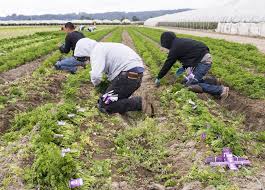

Parsley is a biennial plant with bright green, feather- like leaves and is the same family as dill. This popular herb is used in sauces, salads, and especially soups, as it lessens the need for salt. Not only is parsley the perfect garnish, it’s also good for you: It’s rich in iron and vitamins A and C.
Soil
Parsley enjoys well – draining soil that is rich in organic matter. Pick a spot that gets full sun (6 to 8 hours of sunlight). Try to choose an area that is weed – free; that way you will be able to see the parsley sprouting after about 3 weeks.
Planting
Sow parsley seeds 1/4 inch deep. Sow seeds about 6 to 8 inches apart. For larger plants, sow about 8 to 10 inches apart. Be sure to keep soil moist while seeds germinate. It can take 2 to 4 weeks for seedlings to appear.
Pests / Diseases
* Stem rot.
* Leaf spots.
* Carrot fly and celery fly larvae.
Harvesting
When the leaf stems have three segments, parsley is ready to be harvested. Cut leaves from the outer portions of the plant whenever you need them. Leave the inner portions of the plant to mature. If you want fresh parsley throughout the winter, replant the parsley plant in a pot and keep it in a sunny window.
Storage
One method of storing the parsley fresh is to put the leaf stalks in water and keep them in the refrigerator. Another method of storage is drying the parsley. Cut the parsley at the base and hang it in a well- ventilated shady and warm place. Once it is completely dry, crumble it up and store it in an container.

